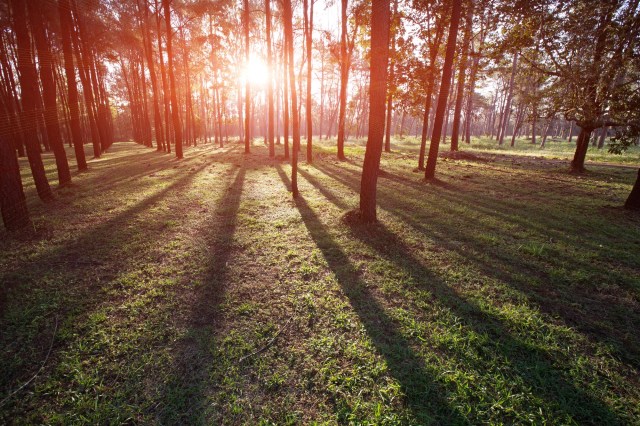Credit: Getty

Last week the British Government threw its weight behind a scheme to plant 50 million trees across the north of England. The new Northern Forest will stretch from Liverpool to Hull and cost £500 million over 25 years.
The United Kingdom is an arboreal laggard, with trees covering just 12% of its land area. That puts it way behind the other G7 nations: Germany (32%), America (34%), Italy (35%) and France (37%) are all in the same neck of the woods, with Canada (49%) and Japan (67%) leaving the rest in the shade.
Why is Britain so exposed? Geography is the main problem. Relative to its population, the UK isn’t very big and most of the land is flattish and accessible. Therefore, it tends to be farmed.
More agriculture, especially when encouraged by subsidies, means less space for trees.But what if we could combine trees with agriculture?
In a fascinating article for the Guardian, Bibi van der Zee investigates an “innovative technique called agroforestry”:
“The theory is fairly simple; trees are integrated into agricultural landscapes to create microclimates and shelter for animals or crops, also improving biodiversity and water and soil conservation. The trees also produce crops in their own right in the form of timber, coppicing or fruit.”
The idea is that you literally plant trees in your fields, albeit at a wider spacing than would be the case for woodland. This is unorthodox to say the least. Indeed, from a conventional farmer’s point of view a tree is just a big weed, something to be removed from, not added to, cultivated land.
One needn’t be a farmer to think of the objections to agroforestry:
“Won’t the trees take up valuable land and risk reducing your productivity – and your income? Don’t they compete for water resources? Don’t they cast shadow, when you want as much light as possible?”
Well, you’d be surprised:
“…tree roots don’t compete with the crops for water, for example, because their root systems go down far deeper than the crop; there is also potentially a 30% reduction in water evaporation from the soil. Anxiety about blocking valuable sunlight (seen as a positive thing in equatorial countries but less so in northern Europe) can similarly be dealt with by planting the tree alleys from north to south.”
And there are other benefits:
“…studies into biodiversity improvement have been positive, such as a University of Missouri study that found 40-50% more pollinators in agroforestry systems… In terms of soil conservation, studies have found higher levels of mycorrhizal association – the vital relationship between root systems and fungi – larger earthworm populations, and improved nutrient cycling.”
The trees themselves can produce crops, such as fruit and coppiced timber, that can diversify the farm commercially – and, of course, trees absorb and store carbon from the atmosphere.
One issue not addressed in the article is the impact on ploughing, spraying and harvesting. Wouldn’t trees get in the way of farm machinery? It may be that agricultural automation in combination with less intensive cultivation techniques will provide the answer.
The key is experimentation. For decades, the Common Agricultural Policy – and the subsidy schemes that preceded it – constrained farming practice. The main thing that was rewarded was crude production, even on marginal land where unsubsidised agriculture isn’t otherwise economically viable.
Brexit gives Britain a chance to fundamentally rethink support for farming. The environment minister, Michael Gove, has already promised a much greener agricultural regime; but just as importantly it should also encourage innovation.
As I’ve argued before, we don’t have to choose between technology and sustainability. If we get agroforestry right, we might not have to choose between trees and fields either.










Join the discussion
Join like minded readers that support our journalism by becoming a paid subscriber
To join the discussion in the comments, become a paid subscriber.
Join like minded readers that support our journalism, read unlimited articles and enjoy other subscriber-only benefits.
Subscribe